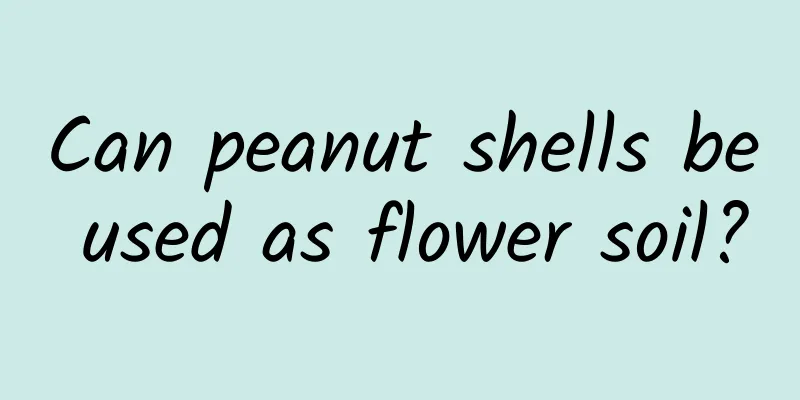Can peanut shells be used as flower soil?

Can peanut shells be used as flower soil?Peanut shells can be used as flower soil, but they cannot be applied directly. They must be decomposed first. The main components of peanut shells are lignin and cellulose, which are not easy to decompose. Applying them directly to the soil will cause the soil's water retention capacity to weaken. They must be decomposed before they can be used. Using them after fermentation can improve soil permeability, increase soil fertility and water retention. How to use peanut shells to grow flowers1. When growing flowers, the soil can easily become compacted and airtight. Before planting, you can put peanut shells at the bottom of the flowerpot and cover them with soil. This can help the soil in the flowerpot maintain good air permeability and drainage, so you don't have to worry about the soil becoming compacted. The effect is very good. 2. Flowers need to be supplemented with an appropriate amount of potassium fertilizer during their growth period. After the peanut shells are burned, their ashes are potassium fertilizers. The ashes can be sprinkled in flower pots to promote the growth of roots and stems, green leaves, and reduce diseases and pests. 3. Crush the peanut shells and spread them on the surface of the potting soil, which can also be very useful. When the temperature is low in winter, it can play a good role in preventing frost and keeping warm. In the high temperature in summer, it can also shade the roots of flowers and plants and prevent rain erosion and loss of potting soil. 4. Peanut shells can be used as planting materials for orchids, but you need to add some perlite, volcanic rock or other granular planting materials. The peanut shells need to be crushed in advance, and the amount should not exceed one third, otherwise it will easily cause root rot of the orchid. Precautions for growing flowers with peanut shellsIt is best not to use peanut shells directly for curing. They need to be fermented in advance and mixed with an appropriate amount of manure, crop straw, water, etc., and piled up for fermentation. If used directly, it is easy to cause root rot. When using, it is better to add a small amount. Using too much at one time will also affect the growth of flower plants. |
<<: Can the rooting plant be hydroponically cultivated? Hydroponics methods and precautions
Recommend
What kind of fertilizer does Clivia like: What is the base fertilizer? Can I pour beer and use eggs?
1. Fertilizer It is a plant that likes fertilizer...
How do seedlings come from?
How do seedlings come from? Rice seedlings are ce...
Cultivation methods and precautions of yellow crane orchid
Soil management Potted yellow crane orchid is sui...
The role of fusang chandelier
Landscape use of fusang chandelier Chandelier hib...
How to take care of the newly bought Australian fir
1. Lighting Australian cedar likes light. After y...
Can cherry blossoms be transplanted in autumn? Transplanting season and precautions
Can cherry blossoms be transplanted in autumn? Ch...
How to Identify Narcissus
1. Bulb The bulb of the South American daffodil i...
When is the best time to transplant the dragon boat flower?
The transplanting of the dragon boat flower is ca...
Method for rooting fuchsia in hydroponics
1. Choose cuttings First, choose some sturdy bran...
Longevity flowers blooming all over the world
The legend of Kalanchoe Legend has it that a long...
Things to note when repotting the feather calathea
Things to note when repotting the feather calathe...
Can shrub roses be potted?
Can shrub roses be potted? Shrub roses can be pot...
Ginkgo tree introduction, ginkgo tree price
1. Morphological characteristics 1. Tree: Ginkgo ...
What to do if the money tree does not grow new shoots
1. Replenish water in time (1) Specific reason: I...
How long does it take to pot the succulent after root pruning?
1. How long to pot after root pruning? Generally,...









